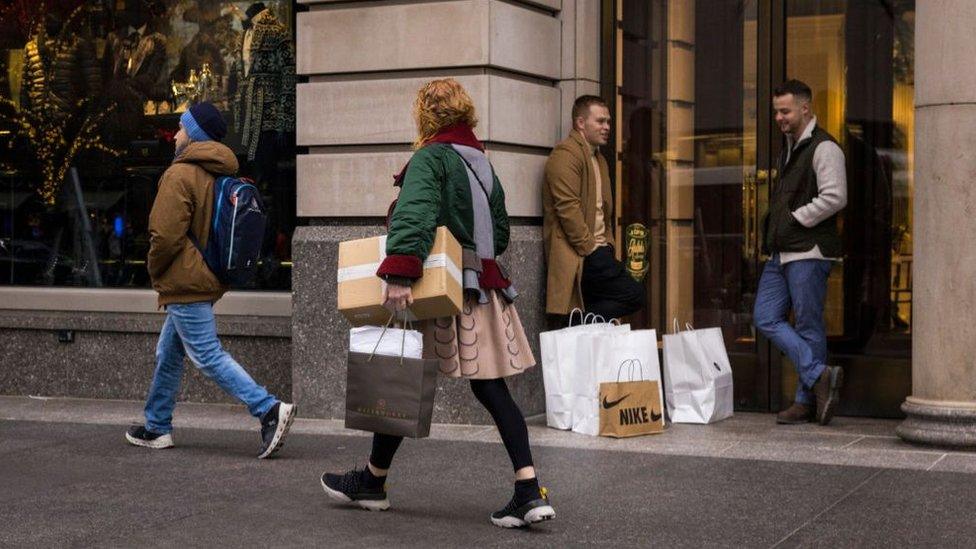US jobless rate falls to lowest level since July
- Published

Consumer spending is the main driver of the US economy
Jobs growth in the US was stronger than expected last month, in part boosted as striking workers in Hollywood and the car industry returned to work.
Employers added 199,000 jobs in November, the Labor Department said.
That helped to push down the jobless rate to 3.7% - the lowest level since July.
The monthly report is being closely watched as the US central bank tries to cool the economy to reduce inflation, the rate at which prices rise.
The Federal Reserve has raised interest rates to the highest level in more than two decades in an attempt to slow price rises, and investors are increasingly betting that rates have peaked for now and may even start to fall next year.
But the latest figures, while welcome news for jobseekers, may confound those hopes.
As well as stronger-than-expected job gains, the report showed average hourly pay ticking up 0.4% from October.
Average hourly earnings have climbed 4% from November 2022 - a rate that analysts said was too fast for the Fed to declare its job is done.
The strength of the US economy over the past year has defied expectations and persistently glum economic sentiment.
In the most recent quarter, it expanded at an annual rate of 5.2% - well above the trend in pre-pandemic years.
A strong labour market has helped sustain consumer spending - the main driver of the US economy - though some retailers have warned of weakening sales in recent weeks.
Last month's job gains were driven by hiring at health care and manufacturing firms, as well as the government.
Payrolls at retail, warehousing and transportation firms fell, despite heading into the holiday season.
Ian Shepherdson of Pantheon Macroeconomics said the drop could be a sign that "retailers are already nervous", but might also reflect quirks from the Labor Department's efforts to adjust for seasonal trends.
Overall, the US has added an average of 240,000 jobs per month over the past year, the Labor Department said.
"While job growth is falling compared to last year, it is holding up remarkably well in the face of a tough economic picture and slowing growth globally," said Richard Carter, head of fixed interest research at Quilter Cheviot.
When the Fed started raising interest rates, many analysts warned it could trigger an economic recession, if higher borrowing costs prompted firms and households to slow spending dramatically.
That forecast has been increasingly abandoned.
Mr Carter said: "The full effects of the rate hikes have not yet been felt, so the picture could deteriorate from here, but for now the economic picture is looking strong in the US and that will leave the Fed heading into next year feeling just fine about the job it has done to date."
Related topics
- Published14 November 2023

- Published1 November 2023
